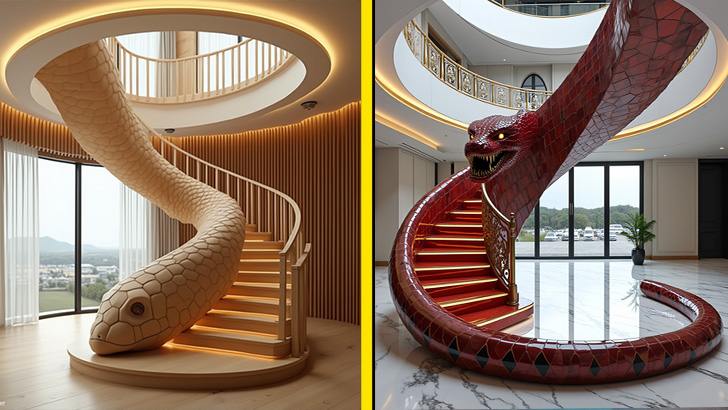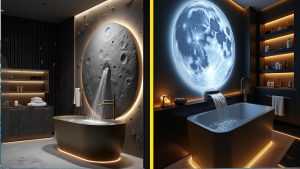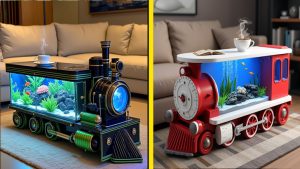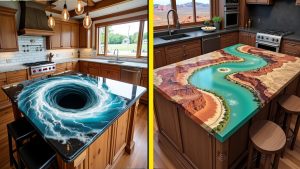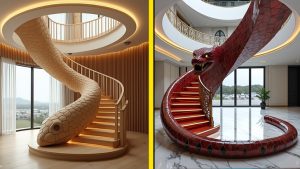Gone are the days when staircases were mere structural necessities. Today, they’re canvases of expression, commanding attention and redefining how we interact with space. Among the most jaw-dropping innovations in modern interior architecture are snake-inspired staircases—twisting, coiling, and gliding through homes and commercial buildings like living sculptures.
These staircase designs blend the mystique of serpents with cutting-edge craftsmanship, offering more than just a way to get from point A to B. They become focal points—functional works of art that evoke both awe and admiration. For those craving a dramatic, artistic touch in their living or working environment, nothing says “bold luxury” quite like a staircase shaped like a slithering serpent.
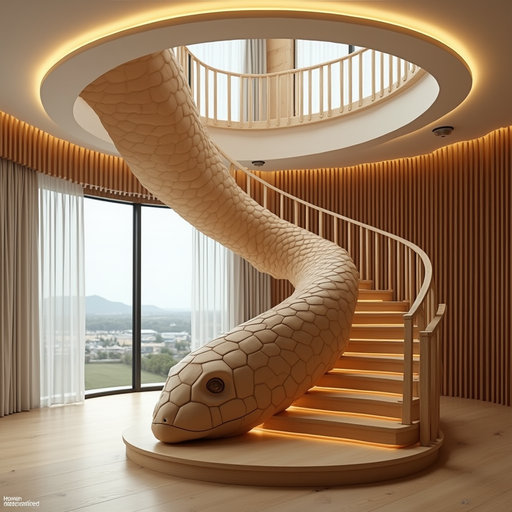
Whether you’re into symbolism, organic design, or simply want something no one else has, these sculptural staircases promise to leave a lasting impression. Let’s unravel what makes them such a breathtaking trend in architectural and interior design.
The Rise of Sculptural Staircases in Interior Design
Staircases have historically been utilitarian—a means to connect floors. But architecture, like all art forms, evolves. In recent decades, we’ve witnessed a dramatic shift from generic stairwells to sculptural masterpieces. This isn’t just about vanity. It’s about turning everyday elements into meaningful, immersive design experiences.
Snake staircases are at the forefront of this shift. They’re a reflection of how far we’ve come in treating architecture not just as shelter but as self-expression. With advancements in engineering and fabrication, what was once impossible—fluid, curved structures with organic flow—has now become achievable.

Why the change? Homeowners and designers alike have become more adventurous. The demand for “Instagrammable” interiors and show-stopping features has surged. People want homes that feel like galleries, hotels that feel like fantasies, and businesses that look like statements. Enter the serpent: a creature of power, elegance, and mystery—now reborn in the form of staircases.
Anatomy of a Snake Staircase – What Makes It Special?
So what makes a snake staircase… well, snake-like? It’s all in the details. These staircases mimic the fluid motion of a serpent gliding across terrain. Their curves twist naturally, following an S-curve or coil that feels alive, almost slithering through the space it occupies.
The risers, treads, and balustrades flow together, often uninterrupted, giving the illusion of movement even when still. Some designs include a visible “head” or “tail” sculpted into the wood or metal, while others maintain a subtler silhouette, simply echoing a snake’s organic shape.
This aesthetic isn’t just for show. The sinuous form offers design flexibility, adapting to spaces where traditional staircases might look clunky or out of place. And thanks to modern software and precision tools, these designs can now be brought to life with mind-blowing accuracy.

Additionally, features like integrated lighting, textured finishes that resemble scales, and transparent or reflective materials add layers of visual complexity. It’s art. It’s architecture. It’s the wild side of interior design unleashed.
Popular Materials Used in Snake Staircase Designs
The magic of these staircases doesn’t stop at their shape. Material choice plays a huge role in how the final piece feels and functions. Designers are combining elegance and engineering, using materials that elevate the design while ensuring safety and durability.
-
Marble: A timeless favorite, marble brings weight and prestige. When polished, it enhances the organic flow of a snake staircase, with natural veining adding to the lifelike effect.
-
Wood: Warm, tactile, and versatile, wood is a popular choice for residential spaces. It can be carved or laminated into curved shapes and stained in dark hues for a reptilian look.
-
Metal: Steel and bronze offer a sleek, modern twist. With their strength, they’re ideal for bold structures, especially in commercial or industrial spaces.
-
Glass: Often used in balustrades or floating staircases, glass gives a sense of airiness. It lets the snake form “float” and become a centerpiece without crowding the space.
Some designers even incorporate resin, terrazzo, or stone inlays for added texture and drama. Others go a step further, using custom paint finishes or airbrushed designs to create the illusion of reptilian skin.
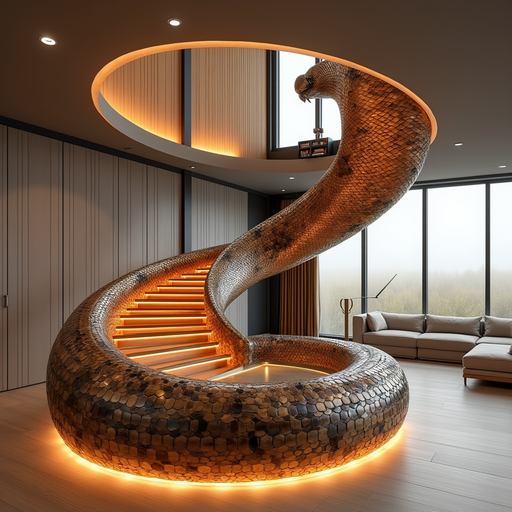
It’s not just about choosing beautiful materials—it’s about combining them in a way that feels harmonious, alive, and undeniably bold.
Lighting Effects That Bring the Design to Life
What’s a sculpture without the right lighting? For snake staircases, lighting does more than brighten steps—it animates them. With strategically placed LED strips, embedded spotlights, or even fiber optic strands, designers can create a mesmerizing interplay of shadows and glow that makes the structure come alive.
Common lighting features include:
-
Under-step lighting: Highlights the floating effect and gives a soft ambient glow
-
Backlit balustrades: Especially with glass or resin, this creates a halo effect
-
Directional spotlights: Enhances textures and adds dramatic shadow play
The lighting transforms these staircases into theatrical installations. Imagine descending a glowing serpentine path, its curves pulsing with subtle illumination—like a living creature guiding your steps.

More than just stunning, this lighting also serves a practical purpose. It improves visibility, marks step edges, and can even respond to motion sensors. In high-end homes and luxury hotels, it’s the detail that pushes a staircase from impressive to unforgettable.
Tailored to Fit – Customization and Craftsmanship
Every snake staircase is a one-of-a-kind creation, tailored to fit not just a space but also a story. Unlike off-the-shelf staircases, these aren’t mass-produced—they’re artisan-built from the ground up with painstaking attention to detail. From the initial sketches to the final polish, each piece undergoes a deeply customized design process.
Homeowners and architects work closely with craftsmen to align the staircase with the existing interior design and desired aesthetic. Whether it’s a coiling cobra-inspired structure for a grand hallway or a subtle serpentine flow in a modern loft, the flexibility of design is enormous.
The craftsmanship is next-level. These staircases often require:
-
Hand-carved balustrades or wood elements
-
Custom moldings and 3D-printed features
-
CNC-machined components for precision
-
Expert welding or stone setting
Artisans also incorporate color accents, hand-painted motifs, or scale-like textures to enhance the reptilian feel. The end result? A staircase that isn’t just structurally sound but also emotionally resonant—bringing personality, symbolism, and a tactile wow factor to the space.

Who’s Installing These Staircases?
You might wonder, who is daring enough to put a giant snake-shaped staircase in their home? The answer: those who love to make bold statements.
These staircases are popular among:
-
Luxury homeowners who view interior design as an extension of their personality.
-
Boutique hotels and themed resorts aiming to offer guests a visually unforgettable experience.
-
Art galleries and creative studios where design and identity go hand-in-hand.
-
Cultural centers and museums wanting to reflect mythological or regional symbolism.
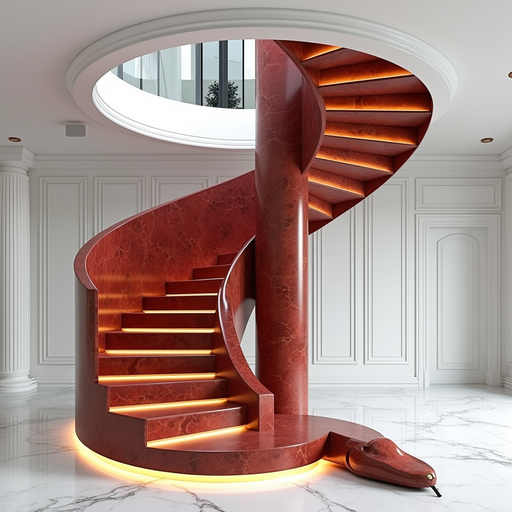
Beyond personal taste, many designers are now incorporating snake staircases into concept projects to demonstrate creativity, push boundaries, and attract media attention. In the competitive world of real estate and design, a single stunning feature like this can elevate a property’s appeal and value overnight.
In short, the clientele is adventurous, bold, and unafraid to blur the line between function and fantasy.
Incorporating Nature and Mythology
Snakes have long slithered through the realms of culture, art, and mythology. From ancient Egyptian cobras to the Hindu naga, the serpent holds deep spiritual and symbolic meaning. And when that symbolism is woven into a physical structure, the result is something truly profound.
Designers draw from a variety of influences:
-
Greek and Roman mythology – The ouroboros (snake eating its tail) represents eternity.
-
Chinese feng shui – Curves bring balance and energy flow.
-
African tribal art – Snakes symbolize transformation and rebirth.
These cultural stories add layers of depth to the design. A staircase isn’t just a staircase—it becomes a metaphor. The winding coils can represent life’s journey, the act of ascending symbolizing growth, wisdom, or enlightenment.
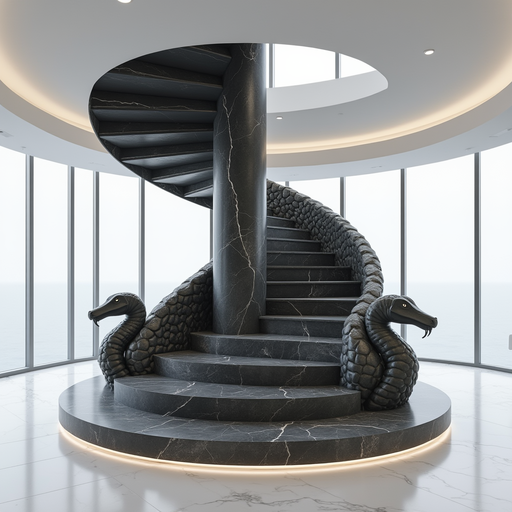
Some homeowners even tie the design to their personal heritage or beliefs, turning their staircase into a sacred space or storytelling feature. Others simply appreciate the wild, primal energy that a serpent represents. Either way, the connection to nature and mythology enriches the emotional impact of the design.
Practicality Meets Drama – Are They Functional?
Sure, they look incredible—but are they safe? Functional? Easy to use? The short answer: yes.
These staircases are engineered with both aesthetics and everyday usability in mind. Designers use high-grade structural materials and consult with building code experts to ensure that the dramatic appearance doesn’t come at the cost of stability or safety.
Here’s how form meets function:
-
Risers and treads are ergonomically spaced.
-
Handrails and guardrails follow safety regulations—even if they resemble a snake’s body.
-
Non-slip materials are incorporated for better traction.
-
Weight loads are thoroughly tested during fabrication.
While the sinuous shape can seem intimidating, walking on these staircases is surprisingly intuitive. The flow feels natural, guiding the user along a path that’s both secure and visually stimulating.
They’re designed for daily use, not just for show. In fact, many owners report that guests gravitate toward them and often spend more time admiring or photographing the staircase than anything else in the room.
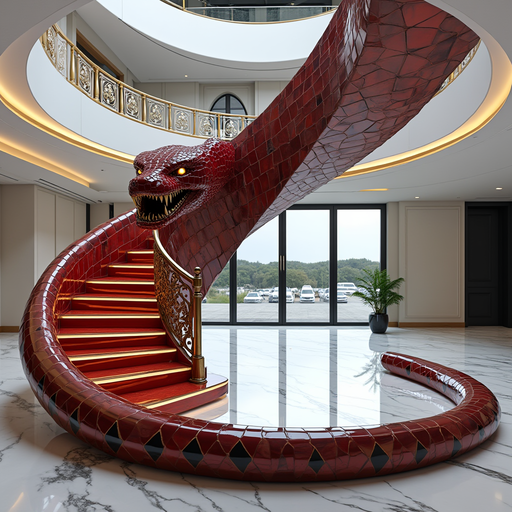
The Psychology of Serpentine Design
There’s something almost hypnotic about a snake staircase. It pulls your eyes along its curves, invites exploration, and elicits a sense of curiosity. That’s no accident—curved lines have a strong psychological impact.
In design psychology, curves are associated with:
-
Movement – They suggest progress and direction.
-
Calmness – Unlike harsh angles, curves feel gentle and organic.
-
Mystery – Twists and coils keep the mind engaged.
When applied to architecture, this results in a space that feels both artistic and emotionally resonant. The mind perceives a snake-like form as alive, dynamic, and mysterious—qualities that can enhance the ambiance of a room or structure.
In holistic design philosophies like feng shui or biophilic architecture, serpentine shapes represent natural flow, flexibility, and transformation. They’re thought to invite energy into a space and encourage intuitive movement through it.
It’s a reminder that design isn’t just about how something looks—but how it makes us feel.
